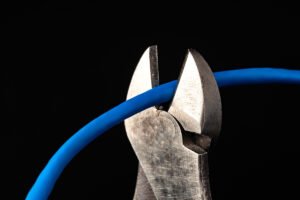
A growing number of philanthropists and organizations are raising awareness about the need to address excessive wealth in philanthropy. Earlier this year, for instance, the Donor Revolt for Charity Reform campaign officially launched with the release of a letter signed by more than 160 prominent philanthropists demanding charitable giving reform measures to address inequality in philanthropy.
“The key vehicle that is propping up the ability for excessively wealthy folks to hoard their wealth is the tax system”
Spearheaded by groups like the Excessive Wealth Disorder Institute, Inequality.org, and the Institute for Policy Studies, the campaign draws attention to the fact that much of the money philanthropists donate to charitable causes never reaches the people it is supposed to serve. Instead, the donations are often hoarded in donor-advised funds (DAFs), which don’t have payout requirements.
According to the Excessive Wealth Disorder Initiative (EWDI), this type of wealth and the wealth hoarding it often enables are a “societal sickness” resulting in the insatiable need to acquire more. Founded in 2022, the California-based organization seeks to tackle this sickness through research, education, organizing, and building a broad-based movement that dismantles the social, economic, and environmental dangers of excessive wealth.
“For us, a critical aspect of inequality in philanthropy has to do specifically with wealth hoarding. The key vehicle that is propping up the ability for excessively wealthy folks to hoard their wealth is the tax system, and the tax system is also what underlies the system of philanthropy,” said Gabriela Sandoval, EWDI’s executive director, in an interview with NPQ.
“We don’t actually know how much money is there and how much is being actively spent.”
Sandoval said that while there are people who genuinely want to do good with their wealth, like the Donor Revolt letter’s signers, the way the tax system is currently set up creates a vehicle for hoarding wealth, evading taxes, decreasing tax burdens, and having wealth stay in place and grow—as opposed to being used to solve some of the world’s most pressing problems.
As Sandoval mentioned, one of the biggest ways she sees inequality show up is through DAFs, which are giving accounts managed by tax-exempt nonprofits. Donors get substantial tax deductions when they place funds into DAFs, but they have no obligation to distribute the funds to qualified charities. Often, the donations sit in the fund for years without being used.
“There’s a lack of transparency,” Sandoval said. “We don’t actually know how much money is there and how much is being actively spent. It really exacerbates the problem that philanthropy already had by creating a kind of shell game.”
The Call for Philanthropic Reform
In April, EWDI joined forces with the Donor Revolt for Charity Reform and the Crisis Charitable Commitment—a campaign to increase charitable funds to nonprofits in response to the COVID-19 crisis and aftermath—for a one-day summit in San Francisco to discuss how wealth hoarding has shaped philanthropy and how advocates can work together to implement reforms. The summit was EWDI’s first in-person event since its founding. Sandoval noted that she was pleasantly surprised and heartened to see the enthusiasm in the room.
Sandoval added that the inherent power imbalance between funders and grantees was part of the impetus for bringing together a collective of people from different areas. The conversations included funders as well as those who depend on funding for their organizations’ wellbeing.
Sign up for our free newsletters
Subscribe to NPQ's newsletters to have our top stories delivered directly to your inbox.
By signing up, you agree to our privacy policy and terms of use, and to receive messages from NPQ and our partners.
“There’s clearly, in…progressive philanthropic circles, a thirst for this kind of conversation.”
“If we’re trying to poke the monster in the eye, we need to be able to provide cover for those who might be best positioned but also still engaged in a power dynamic that is very real, so we have to begin that conversation,” she said.
According to Sandoval, EWDI intentionally put out a wide call for attendees. In the end, those who showed up shared an understanding that there is a problem in philanthropy they want to address, even though many were entering the conversation from different places with different approaches to addressing the issue.
Sandoval believes one reason the gathering was critical is that people often recognize there is an inherent power imbalance in philanthropy and want to engage in good philanthropy but do not have the opportunity to engage questions around the tax system and how that might interplay with the work they are trying to accomplish.
“I think one of the really big things I learned from this event is that there’s clearly, in the kind of progressive philanthropic circles, a thirst for this kind of conversation. A lot of people shared with us the linkage being made between the tax system and philanthropy and how important that is,” Sandoval said.
In terms of the next steps, she noted that follow-up conversations with attendees have already begun. The hope is that these conversations will engage more people who are invested in bringing about reform—a 10-point call to action released by the Donor Revolt for Charity Reform serves as a guide of sorts.
Among the points of the plan is a call for DAFs to be required to pay out funds within five years of receipt. Additionally, Sandoval said that she has been discussing with advocacy organizations across the country about the possibility of introducing legislation at the state level that would call for more transparency around DAFs. Such legislation was previously introduced in California by assemblymember Buffy Wicks.
While noting that she believes passing such legislation on the federal level would be an uphill battle, Sandoval also said that she thinks it’s important to push for similar legislation on a broader scale to be able to understand the extent of the problem.
“I think it’s an important aspect of educating folks—educating our legislatures, educating even philanthropists—on the role of philanthropic associations and their role in lobbying against these kinds of efforts,” she said. “And how those efforts at the association level are made invisible to a lot of the people who establish the foundations, oftentimes with great hopes for making good in the world.”











